Table of Contents
Toggle- What Is a Blockchain?
- Permissionless (Public) Blockchains: Open and Decentralized
- Permissioned (Private) Blockchains: Closed and Centralized
- Key Differences Between Permissioned vs. Permissionless Blockchains
- Use Cases for Permissioned vs. Permissionless Blockchains
- Advantages of a Permissioned Blockchain
- Advantages of a Permissionless Blockchain
- The Future of Permissioned vs. Permissionless Blockchains
- Conclusion
Have you ever heard of permissioned vs. permissionless blockchains? Recent advancements in distributed ledger technology have given rise to two types of blockchain networks: permissioned and permissionless. And while it may seem like a minor technical detail, the difference between the two is dramatic.
The primary distinction between permissioned and permissionless blockchains lies in who can access the network and how new participants are added. From an infrastructure standpoint, these opposing approaches to blockchain technology offer different levels of security and scalability.
What Is a Blockchain?
We hear a lot about blockchain nowadays, but what is it actually? Put simply, blockchain is an encrypted digital ledger system that records and stores data in a secure, transparent manner. It’s distributed across multiple computers and can be used to store information like transactions or other digital documents.
Each block contains a certain amount of data—and this data is cryptographically linked together in chronological order, creating a chain. Every time someone adds new data to the blockchain, everyone connected to the network will be able to see it. This makes blockchain highly secure and immutable; once something is added to the blockchain, it cannot be changed or deleted without all of the members of the network agreeing on it.
This technology has been used for various applications from cryptocurrency to smart contracts, but one of its most important features is that it provides users with control of their own data. This means that users are in charge of who can access their data—unlike traditional systems where your data gets stored centrally and could potentially be accessed by any third parties.
Permissionless (Public) Blockchains: Open and Decentralized
Permissionless (public) blockchains are open and decentralized, meaning anyone can join the network and read or write to the chain. It’s not controlled by any one authority; instead, it’s maintained by users all over the world. This public nature is at the heart of blockchain technology and gives it its trust-building capabilities; users can trust that their data won’t be tampered with because no single party has control over it.
Unlike permissioned blockchains, which require an invitation or verification process to access the blockchain, anyone—regardless of their identity—can enroll in a public blockchain. That means data stored on a public blockchain can be verified by anyone at any time, with no central point of failure or control. The immutability of these transactions also ensures that once data is written to a public blockchain and uploaded as a “block,” it cannot be changed or removed without invalidating the entire chain—a critical feature for decentralizing networks and taking authority away from a single entity.
If you’re considering the cryptocurrency landscape, Dubai offers a vibrant environment to explore opportunities like “Sell USDT in Dubai.” This global hub provides insights into the convergence of digital assets and traditional finance, potentially reshaping how we perceive and engage with financial transactions.
Permissioned (Private) Blockchains: Closed and Centralized
When it comes to blockchain technology, one of the most important differences is between permissioned vs. permissionless blockchains. A permissioned blockchain is also referred to as a private blockchain and is different from a permissionless blockchain because it requires participants to be explicitly authorized before they can read or write data on the chain.
In other words, all participants in a permissioned or private blockchain need to be approved by the network’s owner. This means that there is greater control over who can access the network. Therefore, transactions within a private network are known as ‘closed’ and ‘centralized’ since only certain people have access to them.
A closed and centralized permissioned blockchain offers several advantages for businesses such as:
- Enhanced security: As only authorized participants can gain access, the risk of malicious attacks is minimized.
- Greater scalability: Private blockchains are faster and more efficient than public blockchains due to their lower number of users.
- Improved privacy: It enables better confidentiality since only certain participants have access to the transaction data on the chain.
Overall, a permissioned or private blockchain provides businesses with a higher level of control and security in comparison with a public, permissionless chain.
Key Differences Between Permissioned vs. Permissionless Blockchains
When it comes to permissioned vs. permissionless blockchains, there are a few key differences that set them apart. Let’s dive in and explore the primary ones.
Accessibility
The major difference between these two kinds of blockchains is their accessibility. Permissioned blockchains are accessible only by those who have been given permission by the network’s controlling entity, while permissionless or public blockchains are accessible to anyone who wants to access them.
Control
Permissioned blockchains allow one or more controlling entities, such as a central authority, to control all transactions on the network. In contrast, no single entity can control a public blockchain because each transaction must be validated by multiple participants in the network.
Security
Public blockchains offer more security than permissioned ones because participants in a public blockchain work together to secure it. Permissioned blockchains, on the other hand, are less secure as there is only one entity responsible for securing them — if that entity fails, then the entire network is put at risk.
Transparency
Permissionless blockchains also provide more transparency since all transactions can be publicly viewed and verified by anyone on the network. Permissioned networks offer less transparency as they allow only certain entities access to view and validate transactions.
Use Cases for Permissioned vs. Permissionless Blockchains
You may be wondering, what are permissioned vs. permissionless blockchains used for? Traditional blockchain technology is used for cryptocurrency transactions like when users want to buy or sell cryptocurrency in Dubai or elsewhere — but permissioned and permissionless blockchains can be used for much more.
Permissioned Blockchains
Permissioned blockchains are mostly used in the corporate world and private networks where members need to be verified and access to the chain must be granted. These types of chains are usually closed-loop systems that require users to maintain control over who has access to the network.
This makes them suitable for applications where data needs to remain verifiably secure and private, such as medical records, banking services, government operations, or data-sharing platforms between organizations.
Permissionless Blockchains
Permissionless blockchains, on the other hand, don’t require users to pre-authorize access before being able to participate in the network – rather, anyone can join without being granted access or needing a username or password. This makes them perfect for applications that need large-scale participation from a variety of sources – like decentralized voting systems or marketplaces – where users can buy goods from others around the world anonymously and securely.
Advantages of a Permissioned Blockchain
When it comes to blockchains, it’s essential to understand the differences between permissioned vs. permissionless blockchains. While both have advantages and disadvantages, there are some real advantages to using a permissioned blockchain.
Control over Access
First off, a permissioned blockchain allows for more control over who has access to view and make transactions. This is a major benefit for companies that may not want the public to have access to their transactions or records. In addition, it can also help limit access for malicious actors who are trying to steal private data or corrupt the system.
Enhanced Security
Since access is restricted on a permissioned blockchain, it can also provide enhanced security when compared to a permissionless one. This helps ensure that malicious actors are not able to attack the system since they are unable to gain access. This can be especially beneficial if the network is handling sensitive data or if it needs extra protection against potential threats.
Lower Costs
Due to their more limited scope, permissioned blockchains can also be more cost-effective than permissionless ones since there is less hardware and infrastructure needed to support the network. In addition, less time is required for setting up and maintaining the system which reduces overall costs as well.
In conclusion, using a permissioned blockchain offers many advantages when compared with a permissionless one such as increased control over access and enhanced security which leads to lower costs overall.
Advantages of a Permissionless Blockchain
It’s important to note that there are major benefits to using a permissionless blockchain. As the name suggests, these networks do not require permission to join, which means they are more democratic and egalitarian. Anybody who wants to can be a part of the network, allowing for greater potential for innovation and growth.
In addition to this open access, permissionless blockchains also offer:
Immutability
Permissionless blockchains are immutable, meaning once something is stored in them it is too difficult or impossible to change or delete. This adds a layer of trust between parties as nobody can manipulate the data stored in them.
Decentralization
One of the main advantages that permissionless blockchains offer is decentralization, which means that no single entity has total control over the data stored on the blockchain. This ensures that no single user can have an outsized influence on the system’s consensus.
Transparency
Having an open system also means greater transparency, as all participants have access to view all transactions that are stored on the blockchain at any given point in time. This has enabled various applications and industries (finance, healthcare, etc.) to become more secure and transparent while making sure that sensitive data is kept safe and secure.
The Future of Permissioned vs. Permissionless Blockchains
The future is always uncertain, but one thing remains true: blockchain will continue evolving. Permissioned vs. permissionless blockchains have different strengths and weaknesses, so it’s important to understand which system makes the most sense for your project.
With permissioned chains you have the ability to control who can read or write to the blockchain, giving you added security and peace of mind. For highly sensitive data, this could be an essential feature for your project. This type of chain provides users with a secure way of sharing data, as only authorized users can access the chain’s information.
Permissionless chains on the other hand offer public availability. Anyone can join the chain, allowing developers to build a wider range of applications with higher scalability and larger user bases. This is an ideal choice for projects that require a high degree of decentralization and transparency.
The bottom line? No matter which type of chain you choose to use for your next project, you’ll need to do proper research in order to understand what blockchain protocols work best for your needs and future goals. The right decision could make all the difference in terms of success—so make sure you make an informed one!
Conclusion
As you can see, when it comes to Permissioned vs. Permissionless Blockchains, you’ll need to understand the two and the differences between them before deciding which one is for your application. Permissionless blockchains are decentralized and public, allowing anyone to participate, while permissioned blockchains are private and more centralized, allowing only pre-selected entities to access and transact.
Although both can be used to secure information and data, the right choice depends on your individual needs and the application you have in mind. Permissioned blockchains are better suited for securing sensitive data with more control over user access while permissionless blockchains are more suitable for tracking secure transactions in public networks. Ultimately, it is important to weigh the pros and cons of each to ensure you choose the most suitable one for your needs.








